The Daily Mail £10,000 ‘Circuit of Britain’ race
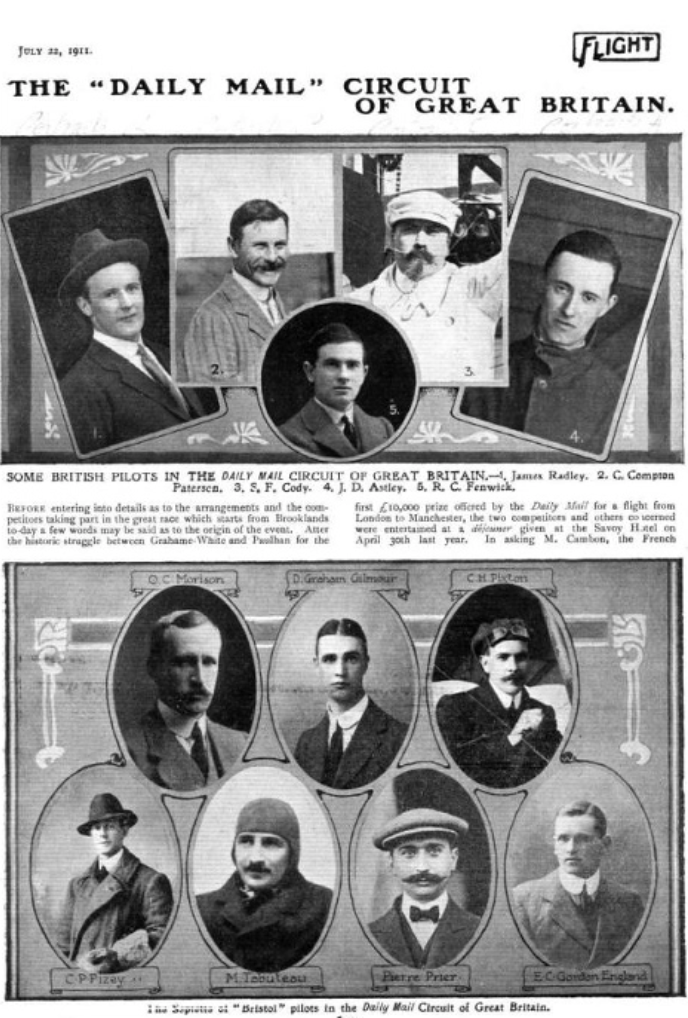
Hot on the heels of the Circuit of Europe air race, came the Circuit of Britain race, which had been announced by the sponsor, the Daily Mail, shortly after their famous £10,000, London to Manchester race between Claude Graham-White, and Louis Paulhan, a year earlier, during April, 1910. This epic encounter between the English and French airmen caught the imagination of the general public, virtually guaranteeing the success of any future great air race.
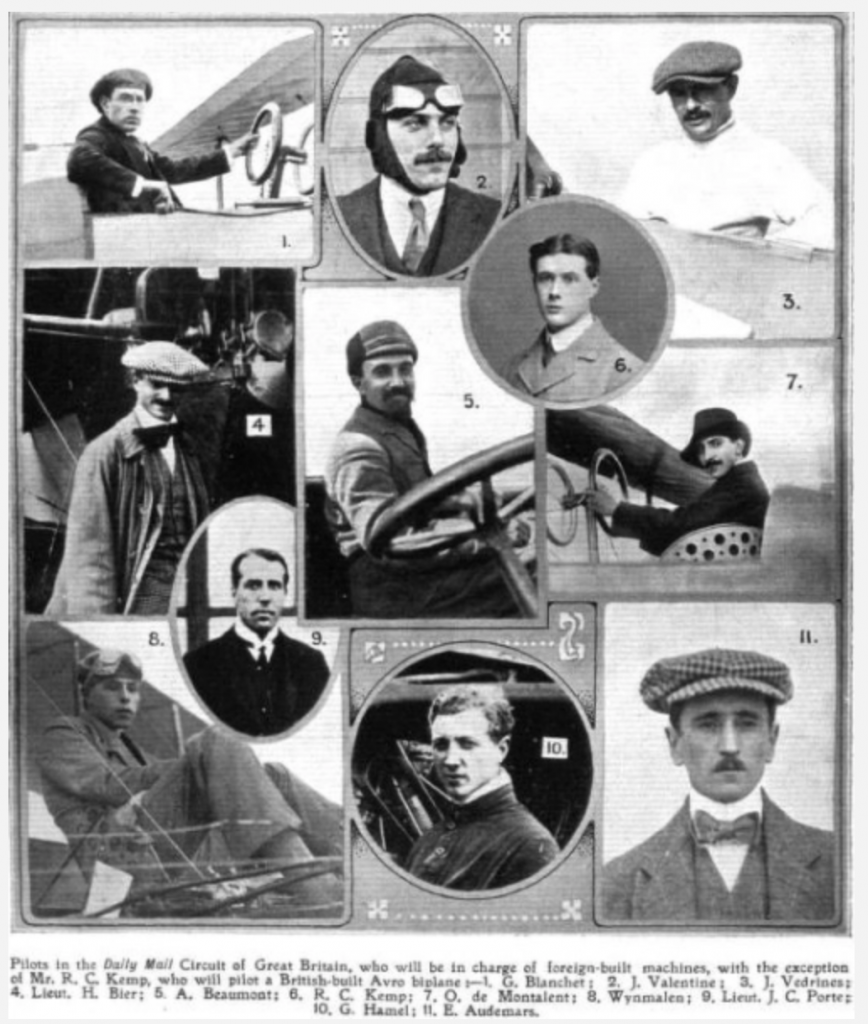
The Daily Mail Circuit of Britain would also be for a prize of £10,000, and would be using Shoreham Aerodrome as one of the control points, which is why I have included a good amount of the race details in this aviation history of Shoreham, but also to give an idea of just what a sensation these aviators and their flying machines were creating all over the country. Among the entrants were a number of aviators who had been associated with Shoreham, James Valentine, O.C. Morison, Gustav Hamel, E.C. Gordon-England, C.P. Pizey, Lieut. J.C. Porte, and C. Howard-Pixton, with the unfortunate Gilmour under suspension, missing out. For this race though, the emphasis would be on the durability of the machines, whereas in the Circuit of Europe, the aviators could change entire planes, or any parts thereof, as often as was felt necessary, now they had to finish the course in the aeroplane they started with. Added to that proviso, there were to be ten parts of the machine which would be marked by officials before the race, of which only 6 parts could be changed during the course of the contest. These conditions were intended as a test of the resilience of the various machines, something that had not yet been done in a race situation.
Flight magazine, July 22nd 1911, reports on the Shoreham flying ground:-
‘Great preparations are being made here for the reception of the racers in the Daily Mail second £10,000 contest, and for the accommodation and comfort of the public, who will have a splendid opportunity of seeing the men and their machines for 1s, 2s.6d, and 5s. each person, while cars, including the chauffeur, can enter at 5s. or 10s., according to the enclosure chosen. Holders of season tickets are admitted free.’
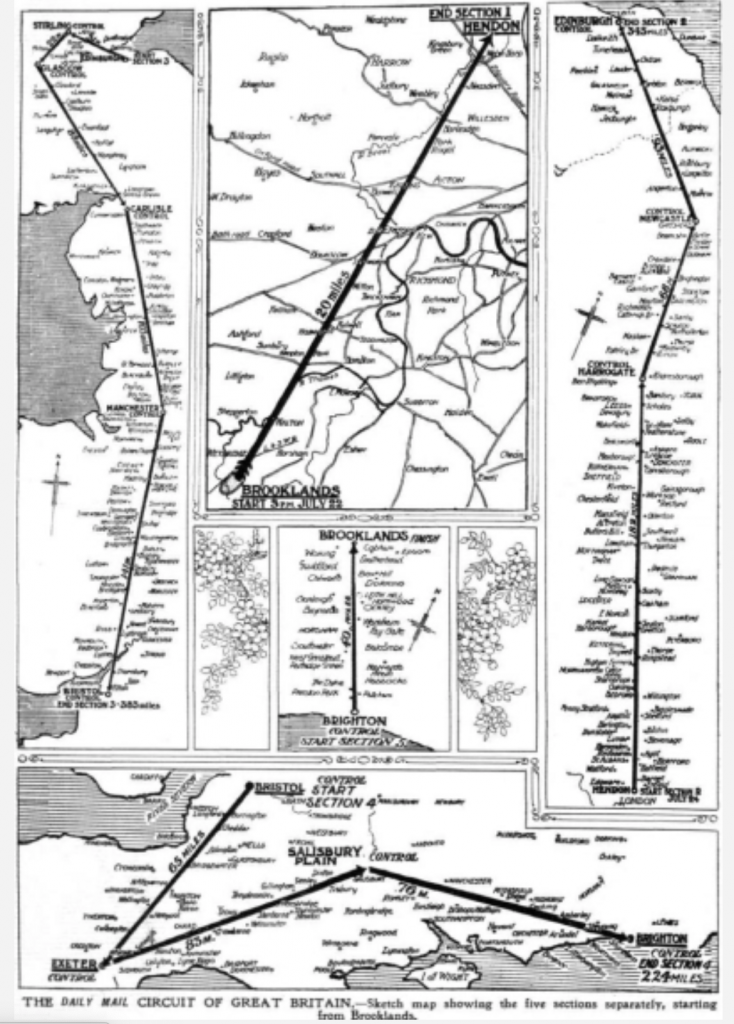
In the Leeds Mercury, Monday 24th July, 1911, it reports on the scenes their correspondent witnessed on the first leg, Brooklands to Hendon:-
‘The whole of the twenty mile route from Brooklands to Hendon was crowded with spectators afoot and in conveyances, and at some points great multitudes assembled. In the immediate neighbourhood of the aerodrome at Hendon, there were fully 50,000 people. “Beaumont” was the first to arrive, the time being 04.20’
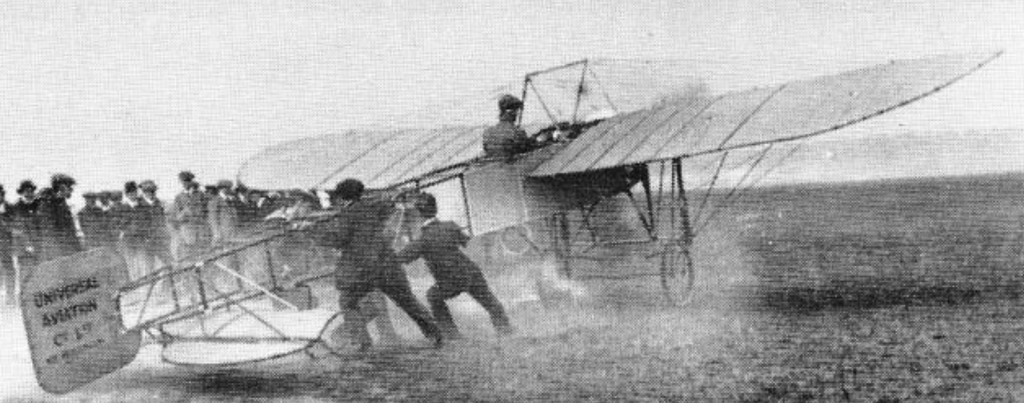
The Hendon and Finchley Times, Friday 28th July, 1911 describes the human sea descending upon the area to catch a sight of this highly publicised air race:-
‘The London crowds began to gather here before midnight. Thousands tramped through eight miles of long roads leading to the aerodrome. Cyclists streamed by all night. In taxi cabs and motor cars, by early trains and motor omnibuses, in costermongers’ carts and tradesmen’s vans, the army of sightseers passed north and west, through the black night and grey dawn. Scenes strange beyond experience resulted from this midnight gathering of the people. Within a mile of the aerodrome men and women slept by the wayside and on the sun baked earth of the fields, heedless of the throng which passed onwards chanting choruses.’
‘Every Hampstead tube station on the route to Golders Green had its crowd waiting for the first train at 2.45a.m. At the Golders Green terminus all the horse omnibuses available and at least 300 taxicabs were plying for hire, hooting and rumbling through the night, scattering the stream of wayfarers and rousing the sleepers by the wayside.’
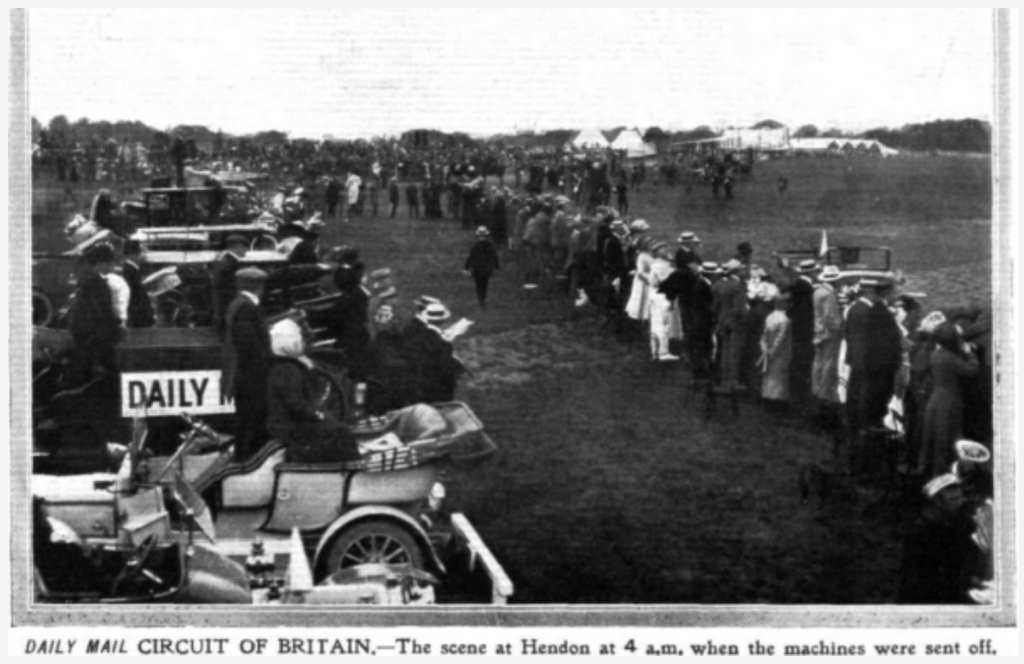
While the race itself was a rousing success, (it was estimated that around half a million people saw the start from the Hendon to Harrogate stage at 4a.m!), it also highlighted once more just how far behind France, Great Britain was in the aviation technology race. The first stage from Hendon to Brooklands, a mere twenty miles, whittled the field down from 29 starters, to just 16, with Vedrines and Beaumont already establishing a lead, with a further 9 entrants dropping out of the contest by Harrogate, where a crowd of between 70-150,000, (depending on which newspaper you read), were waiting for the first arrival, Vedrines, at 7.03a.m, very closely followed by Beaumont four minutes later. Only three more aviators made it to Harrogate, Valentine, Hamel, and Cody, with Hamel causing a great deal of concern on his arrival. The London Daily News, Tuesday 25th July, 1911, reports-
‘The 70,000 people who from daybreak till dusk thronged the fine green stretch of the Stray were perhaps most moved by the dramatic circumstances which attended the descent of Hamel, the young British flier. We saw his Bleriot monoplane gleaming in the sun five miles to the south east soon after half past eleven, and ten minutes later, having planed gradually down from a height of 1000ft, it was hovering over the Mayoral enclosure. A moment more and the machine had gently dropped in the centre of the ground. But there was no movement on the part of the flying man. Officials and mechanics hastened to the machine, and found to their dismay that the aviator was unconscious. Lifting him tenderly from the seat, they stretched him on the ground, and while some rendered first aid, others went in search of a doctor. Luckily a medical man was near and hurried to the spot. He found a man with faintly fluttering pulse, ashen cheeks, and hands and feet stiff and cold, and a quarter of an hour passed before there came a glimmer of returning consciousness.’
By the end of the second days flying, only Beaumont, on a Bleriot monoplane, Vedrines, on his Morane-Borel monoplane, and Valentine, flying a Deperdussin monoplane, had made it to Edinburgh, having stopped at the control point at Newcastle en-route. Gustav Hamel, having recovered sufficiently at Harrogate, later struggled on to Edinburgh, and then to Chryston, Glasgow, but he had been having engine problems for most of the race, and it finally gave out at Dumfries, forcing his retirement on Wednesday 26th July. Of the other Shoreham ‘associated’ aviators forced to retire, were;- Gordon-England, retired with engine trouble at the start at Brooklands, Lieut. Porte, crashed at the Brooklands start, Pixton, crashed his plane on a forced landing at Spofforth, while Pizey was forced to land at Melton Mowbray owing to propeller issues, only to damage the undercarriage when landing.
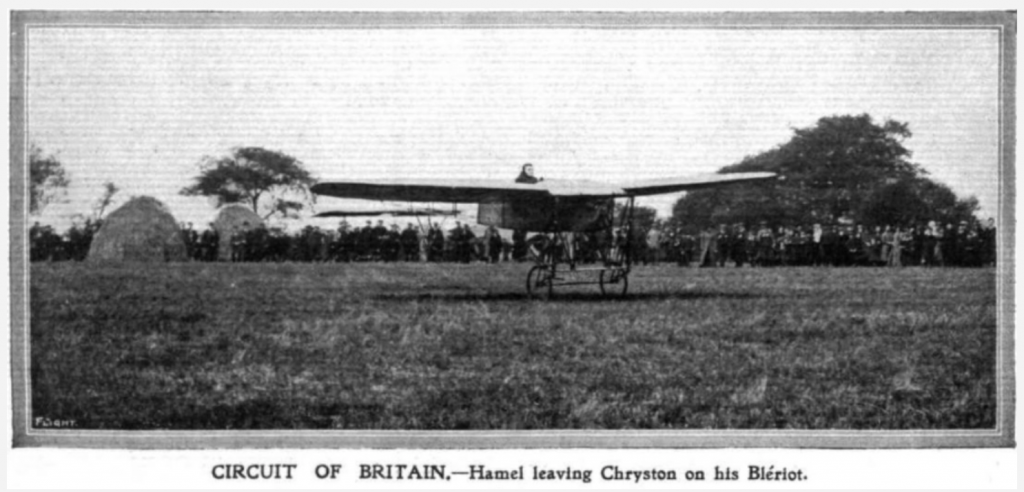
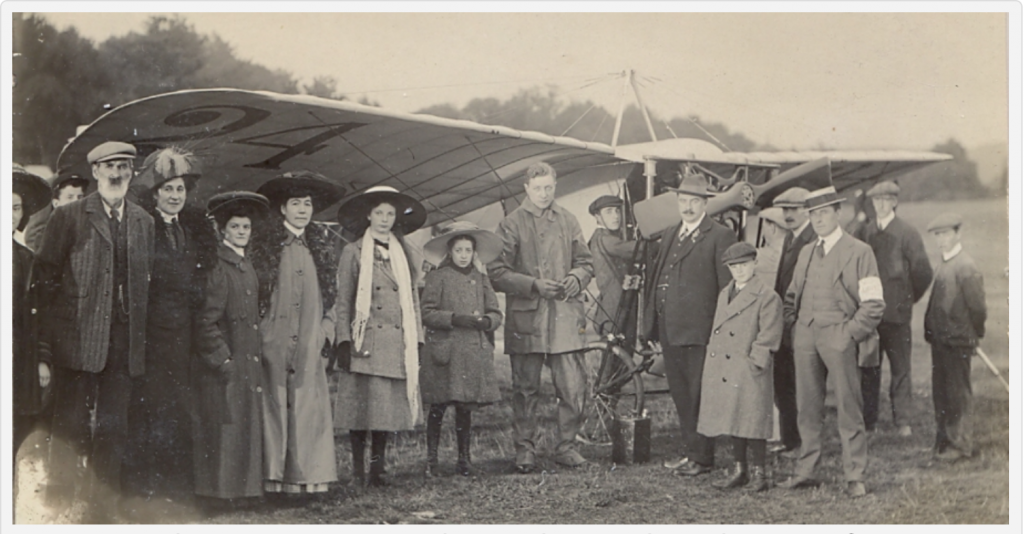
The Yorkshire Post, Tuesday, 25th July, 1911, takes up the story from Edinburgh:-
‘Beaumont started off again from Edinburgh in the great flight at 03.10 this morning. He was closely followed by Vedrines at 03.25. According to one report, Valentine had also left, but another account states that up to 04.20 Valentine had not left. Large crowds had gathered to see the start, and the aviators, as they rose from the ground and soared off to the west, barely outlined on the grey sky, were very loudly cheered.’
Further on it reports the arrival of the leaders at Stirling:-
‘It was 03.40 when the great crowd assembled on the aviation ground outside Stirling caught sight of the first aviator. At first barely visible by telescope, the great Bleriot soon became visible to the naked eye. The machine came right over the town, not by the castle, as expected, made a gliding half circle, and then came down. Vedrines, 18 minutes later, came from the same direction, and also alighted. As the first to arrive, Beaumont was presented by the Provost with a silver inkstand. Both aviators met with a tremendous cheering when they descended.’
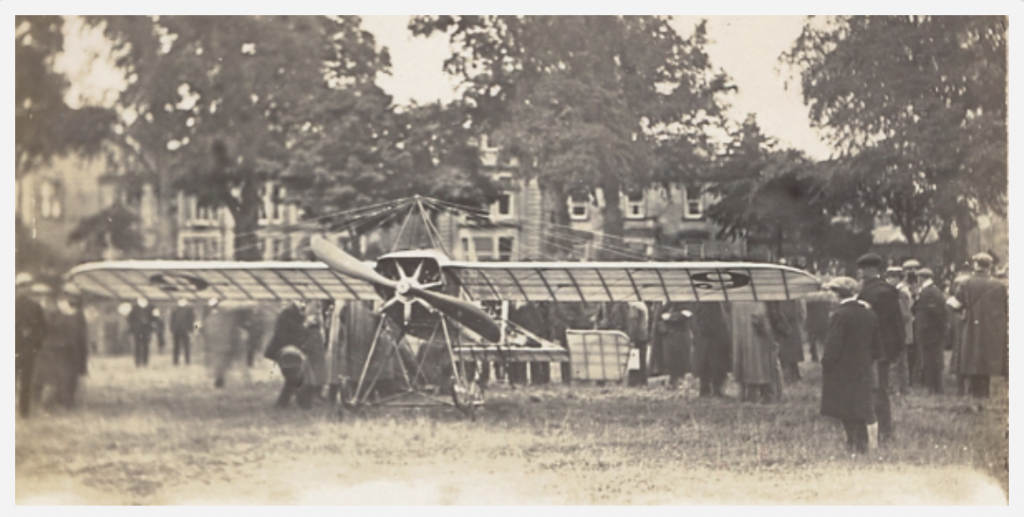
Beaumont flew that stage just three minutes faster than Vedrines, they were still neck and neck, with Valentine not too far behind them, while Cody, determined to finish, hadn’t yet reached Newcastle. The next stage for the leaders, was from Edinburgh to Bristol, via control points at Stirling, Glasgow, Carlisle, and Manchester, both having decided they were going to try and complete the stage that same day. The Western Daily Press, Wednesday 26th July describes this stage:-
‘Keenness of the Frenchmen
Later in the day the race resolved itself in to a struggle between the two great French aviators. Leaving Edinburgh at fifteen minutes behind Beaumont, Vedrines was, roughly, 16 minutes behind at Sterling, 54 minutes at Glasgow, and 44 minutes at Carlisle. Beaumont it will be seen, had gained substantially on his opponent, and the latter, when stopping at Glasgow to take refreshment, made no secret of his chagrin in not being able to maintain his original lead. Nothing apparently happened to Beaumont or Vedrines until they had passed Carlisle. Some 60,000 people were waiting at that town to give them a hearty welcome. The first to arrive was Beaumont, who flew over the racecourse nearly due north. He planed down quietly and landed without the slightest difficulty.’
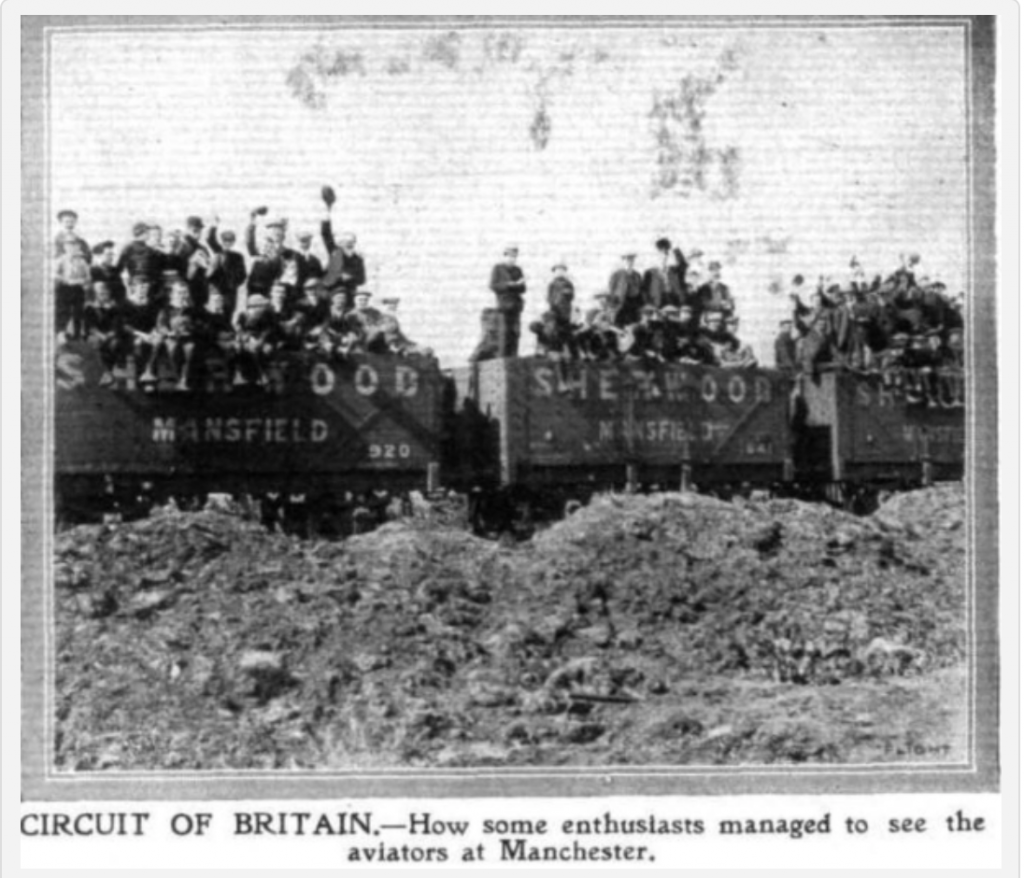
Manchester received the French aviators as everywhere, with vast crowds and tremendous enthusiasm, and down at Filton, near Bristol, it would be no different, further on in the Western Daily Press article, it explains:-
‘The scene which greeted Beaumont’s arrival this evening baffles description. The crowds had thickened beyond proportion since the news was received of Beaumont’s departure from Manchester at 5.44, Vedrines following upon his tail at 6.11’
False sightings kept the huge crowds ever alert, until;-
‘Glasses were trained upon this tiny black point, and it seemed absurd to believe that a man could so appear. But the speck increased in size until it resembled nothing so much as a huge blackbird with long, outstretched wings. The cheers from the aerodrome grew in volume, and the great Bleriot monoplane, with its red wings, and Beaumont sitting serenely at the controls. The fire was situated at the back of the hangars, and Beaumont steered directly for it, planing down upon that strip of the aerodrome nearest Filton station, and coming to a standstill quite near the fire.’
Beaumont’s landing time was 8.37, having taken 2 hours, 55 minutes. Unfortunately for Vedrines, the British and Colonial Company, that build the Bristol aeroplanes, have their own aerodrome nearby, and he landed there by mistake, but to compound the error, he sustained damage to his aircraft too, holding him up even further. Eventually he made it to the correct control point, but it was now after ten, and dark, Vedrines had lost valuable time to Beaumont.
Bristol to Shoreham stage
When the race was devised, Shoreham was intended to be an overnight rest stop, but Beaumont and Vedrines had already used up a good deal of their allotted rest time, so opted for a short stop there and push on to the finish line at Brooklands. Flight magazine of 29th July 1911 gives details of the final stage:-
‘They were astir in the small hours of Wednesday morning looking over their machines, and at ten minutes to five, “Beaumont” was given the signal to start, and getting away sharply, was followed two minutes later by Vedrines. The latter again proved the Morane was the faster machine, and arrived at Exeter two minutes before “Beaumont” at ten minutes past six. He was away again at a quarter to seven, while “Beaumont” did not start again till twenty minutes after, his engine requiring a little attention. A straight course was set for Salisbury Plain, where Vedrines arrived at ten minutes past eight to be followed about twenty minutes later by “Beaumont”. No sooner was “Beaumont’s” machine reported to be in sight, then Vedrines was anxious to be away, and as a matter of fact he started for Brighton (Shoreham Aerodrome) after resting only thirty three minutes, just about ten minutes after his rival had landed. About nine o’clock there was a sharp shower of rain at Brighton (Shoreham), and this probably kept the general public away, so that when Vedrines arrived at three minutes to ten the crowd to welcome him was not very large.’
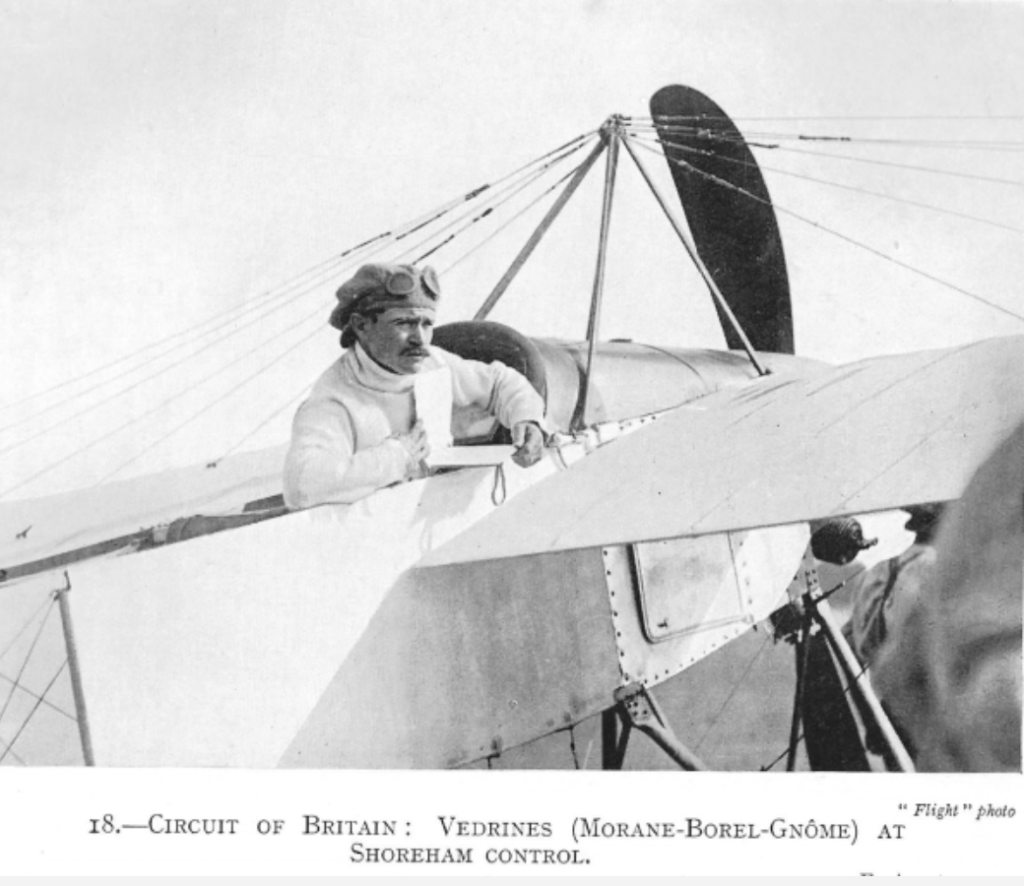
Meanwhile, horse racing enthusiasts on a train to Goodwood had been keeping an eye out for a glimpse of these famous aviators, as reported in the Leeds Mercury, Thursday 27th July, 1911:-
‘On the journey up from Brighton to Chichester this morning, the chief topic of conversation was not the Goodwood Plate, or whether Mushroom would beat Sunder, but the great air race. It was known that Beaumont and Vedrines were expected to arrive at the Shoreham Aerodrome during the morning. The aerodrome is only a few miles out of Brighton, on the way to Chichester, and is close to the railway. We saw plenty of people in the Aerodrome, but no flying machines. Just after passing Ford Junction, however, about 10.30, a fellow traveller, who was keeping a look out on the side facing the sea, shouted, “Here you are”, and in the distance we saw one of the air monarchs approach. The machine was at a great height, and travelling at a great speed. As if to give us a better view the train happened to come to a standstill just at the moment, and from every carriage window appeared the heads of eager and delighted sightseers. The aeroplane was having a very smooth journey in spite of the fact there was a good breeze, and it would arrive at Shoreham soon after half-past ten. We afterwards learned that this was Beaumont’s machine, and that Vedrines had arrived nearly an hour before.’
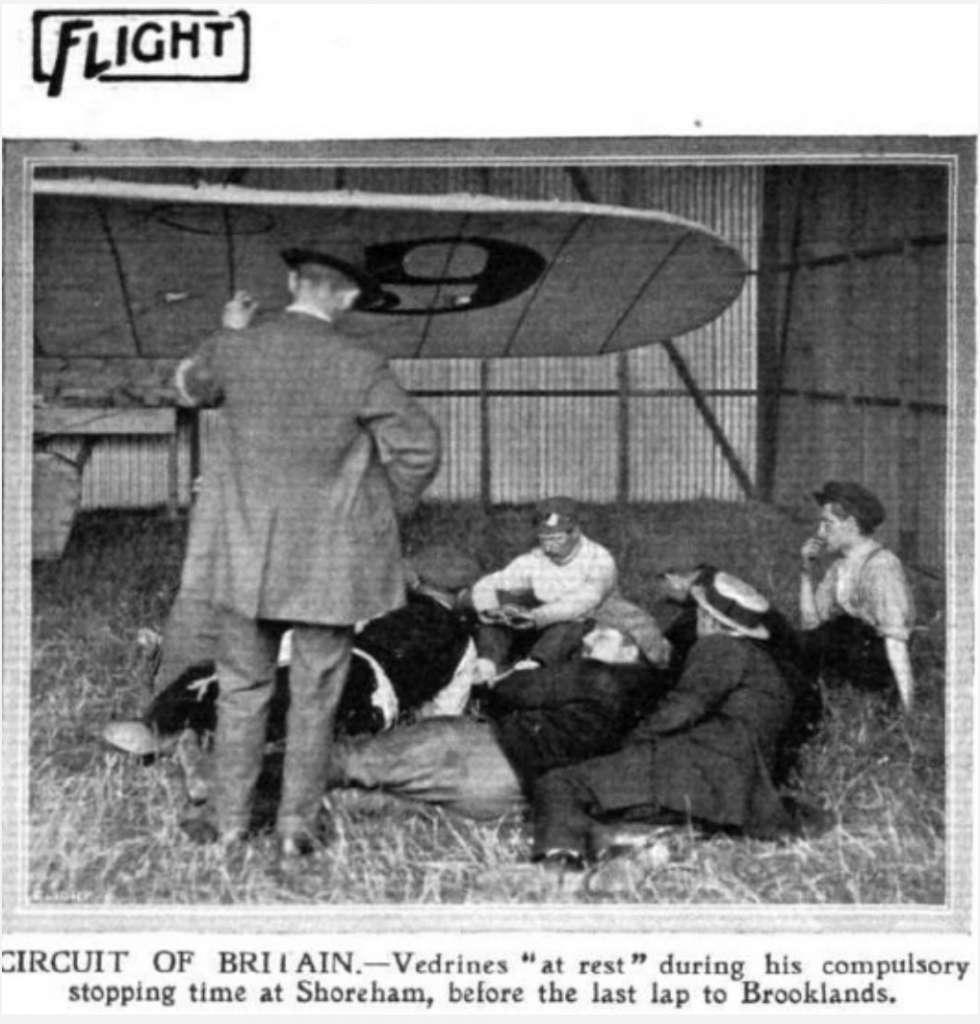
Flight magazine, Saturday 29th July, 1911 details the finish of the race, Wednesday 26th :-
‘ “Beaumont” did not leave Salisbury Plain until 09.47 and so was practically an hour after Vedrines in arriving at the Shoreham Aerodrome, which formed the control station at Brighton. He, however, had used up a good deal of his rest time and so was due to start before Vedrines on the last stage to Brooklands. He had 3 hours and 40 minutes to rest, and took advantage of this to have a little sleep and a rub down. Punctually at 1.28.15 he was in the air and winging his way to Brooklands Motor Course, where he landed after a flight of practically forty minutes. Vedrines was not due to start from Shoreham until 2.41, when punctually to time he was away, reaching Brooklands at nineteen minutes past three. On his arrival at Brooklands, “Beaumont” was carried shoulder high, and after the officials had examined the seals, &c., on his machine and found them all in order he was declared to be the winner of the race and the £10,000 prize.’
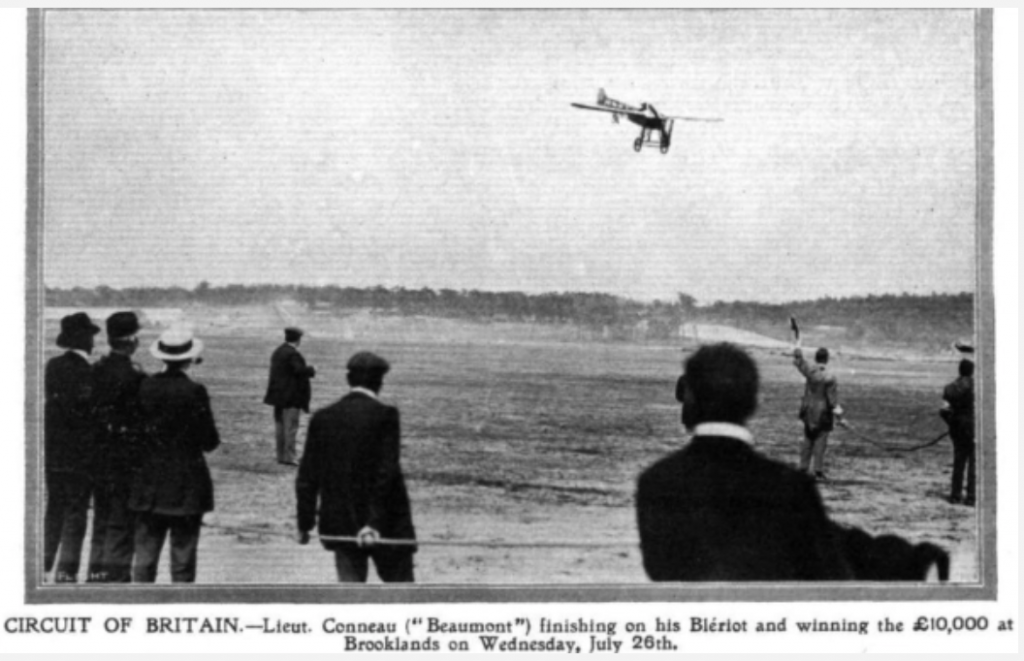
James Valentine on his Deperdussin monoplane, and S.F. Cody on his self-built Cody biplane, were doggedly continuing, determined to see it through, and still the crowds turned out in their thousands throughout the route, as the sheer noise of the machines advertised their arrival well in advance. The Gloucestershire Echo, Friday 4th August 1911 writes:-
‘Valentine arrived at the Shoreham Aerodrome at 7.30p.m, having covered the distance from Salisbury Plain in sixty eight minutes. He thus wins the gold cup presented by the Brighton Hotels Association to the first British aviator reaching Shoreham in connection with the British aviation circuit.’ It concludes:- ‘Valentine left Shoreham for Brooklands in the “Daily Mail” aerial race this morning.’
The Leeds Mercury, Friday 4th August, 1911, updates Cody’s progress:-
‘Cody, who is still trying to complete the course of the great air race, left Clifton, Bristol, en route for Exeter, at 7.25 last night. He arrived at Weston-super-Mare at 8.15, effecting an easy landing on the sands in the presence of a large crowd. He expected to Leave for Exeter at three o’clock this morning.’
Valentine finishes!
Nearly two weeks after setting off from Brooklands, and nine days after the Frenchmen, Beaumont, and Vedrines, had crossed the finish line, James Valentine finally completed the Circuit of Britain course, but not without mishaps even on the final leg from Shoreham to Brooklands. In the Globe, Saturday 5th August 1911, is announced his valiant effort:-
‘Mr Valentine, after being detained near Horsham by a broken stay, reached Brooklands at 6.49 last evening. He was cordially greeted as the first English competitor to complete the distance.’
Cody over the line at last, beats the telegraph.
The Sheffield Daily Telegraph, Monday 7th August 1911, gives account of S.F.Cody, as the last competitor to finish what was considered to be the greatest air race to date:-
‘Telegraph service put to shame
Leaving Salisbury at four o’clock on Saturday, Cody landed at Shoreham Aerodrome at 06.15, and after partaking of breakfast, considerately provided for him by the manager of the aerodrome, left again at 08.25 for the final flight to Brooklands, which he reached at nine o’clock. Valentine when flying from Salisbury to Shoreham on Thursday evening beat the telegraph by twelve minutes, but Cody did still better on Saturday, the telegram announcing his departure from the Cathedral City at four o’clock not being received at Shoreham till 9.16.’
For a more full description of the Daily Mail Circuit of Britain race, 1911, follow the link below for an excellent summary. http://www.thosemagnificentmen.co.uk/britain/
Andy Ramus 2021
For the additional article chapters follow the links:

